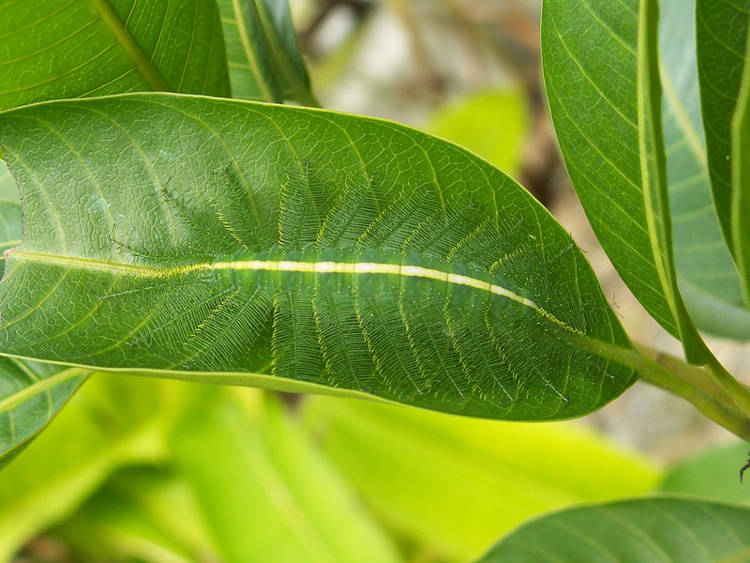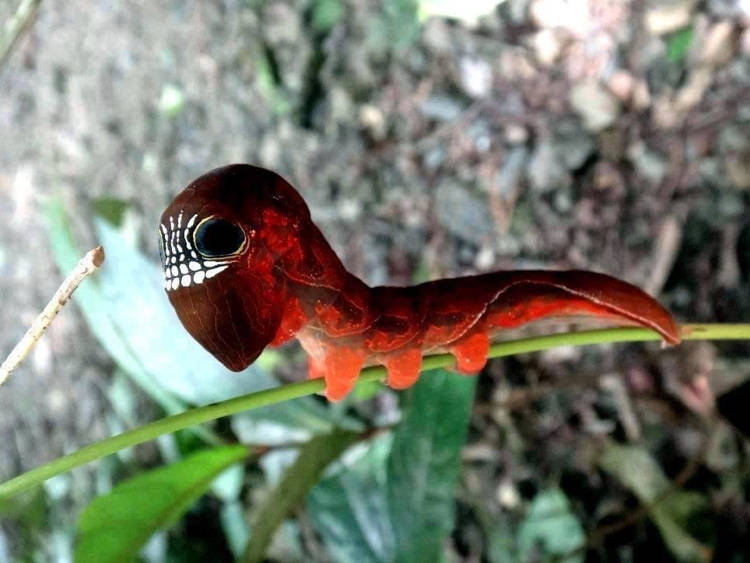This Caterpillar’s Camouflage Is On a Another Level

The Common Baron Caterpillar is a true master of camouflage. When it positions itself perfectly on a mango tree leaf, it is nearly impossible to spot, even if you know it’s there. Some animals naturally develop camouflage in order to make themselves harder to spot by predators, but some are much better than others, and […]
This Caterpillar Mimics a Scary Skull to Keep Predators at Bay

The caterpillar of the rare pink underwing moth has a very peculiar defense mechanism. When disturbed, it suddenly arches its back to reveal a pair of large, frightening eyes and what looks like a two rows of barred teeth. The pink underwing moth is a rare and enigmatic insect found from subtropical New South Wales […]
Hemeroplanes Triptolemus – The Creepy Snake That’s Actually a Harmless Caterpillar

Looking at a photo of Hemeroplanes triptolemus, nine out of ten people would swear it’s a snake. But look closer, and you’ll realize there’s something peculiar about it – the body is unusually short and ends abruptly with a large reptilian head. The truth is, it’s not a snake at all. The Hemeroplanes is actually […]
Lonomia Obliqua – The World’s Deadliest Caterpillar

Lonomia obliqua is just as frail as any other caterpillars you might have seen, but that doesn’t stop it from causing severe serious internal hemorrhaging and even death, if you just touch it. This terrible Lonomia caterpillars live in the rainforests of South America, and cause a few deaths every year, especially in southern Brazil, […]
